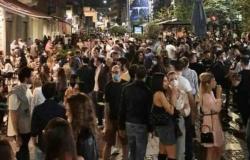Turin’s commercial landscape is going through a phase of profound transformation, characterized by a worrying decline in retail sales activities. According to the latest data provided byConfesercenti Research Officein the first three months of 2024, the Piedmont region witnessed the closure good 786 companies in the commercial sectorwith an alarming average of almost 9 shops a dayholidays included.
This collapse in neighborhood activities is not an isolated phenomenon, but reflects a broader trend that has been affecting the entire area for several years. The causes of this crisis are multiple and interconnected, ranging from the unstoppable rise of e-commerce to customers’ changing consumption habits.
The Impact of E-Commerce
One of the key factors that has contributed to the decline of traditional businesses is the unstoppable growth of e-commerce. Estimates suggest that the Online purchases will increase by 13% during 2024, posing a significant challenge for brick-and-mortar stores. This transition to the digital world has led to a redistribution of consumer preferences, with more and more people opting for the convenience of online shopping.
The decrease in new activities
In addition to closures, another factor contributing to the decline in business activity is the decrease in new business openings. In the first quarter of 2024, only 594 new businesses were opened in Piedmont, a significantly lower than ten years agowhen openings were more than double.
This slowdown of “birth rate” of commercial enterprises it is a worrying sign, as it indicates a lack of investment and confidence in the sector. The reasons for this slowdown can be multiple, such as difficulty accessing crediteconomic uncertainties or challenges related to online competition.
Commercial Desertification
The consequences of this retail crisis are not just limited to the disappearance of storefronts, but also have a significant impact on tax revenues. According to the data provided, commercial desertification has led to a cumulative loss of 5.2 billion euros in tax revenue over the last ten years.
This fiscal erosion affects both the State and local authorities, with negative repercussions on various revenue items, such as IMU, TARI, IRPEF, regional and municipal surcharges, IRAP and other municipal taxes. This resource deficit could have serious consequences on the ability to provide adequate public services and the quality of life in cities.
The Future of Cities Without Shops
Banchieri issued an alarming warning: “Do we really want cities without shops and crossed only by home delivery vans?”. This rhetorical question raises fundamental questions about the role of neighborhood stores in urban vitality and the social cohesion of communities.
Shops are not only places of purchase, but also spaces for social interaction, cultural exchange and valorisation of local identity. Their disappearance could lead to an impoverishment of the urban experience, with negative consequences on the liveability of cities and the quality of life of residents.
The Importance of Preserving Local Identity
In addition to economic and fiscal aspects, the retail crisis also raises issues related to the preservation of local identity and tradition. Neighborhood shops are often custodians of artisanal knowledge, typical products and stories linked to the territory.
Their disappearance could represent an inestimable loss for the cultural heritage and authenticity of cities, replacing local realities with a standardization dictated by large commercial chains and online platforms.
The Impact on the Quality of Urban Life
The retail crisis not only affects economic and fiscal aspects, but also has a significant impact on the quality of urban life. Neighborhood shops play a fundamental role in creating lively and cohesive communities, offering spaces for meeting and social interaction.
Their disappearance could lead to an impoverishment of the urban experience, with negative consequences on the liveability of cities and the social cohesion of local communities. Preserving these commercial spaces is not only an economic question, but also a way to safeguard the soul of cities and the quality of life of residents.
The Challenges of Innovation and Digitalization
Despite the challenges, the retail sector is not immune to the opportunities offered by innovation and digitalisation. Many businesses are embracing omnichannel sales strategies, combining physical presence with a strong online presence.
This approach allows you to exploit the advantages of e-commerce, while maintaining the added value of the in-store shopping experience and direct relationship with customers. However, this transition requires significant investments in technology and training, posing a challenge for many small businesses.




